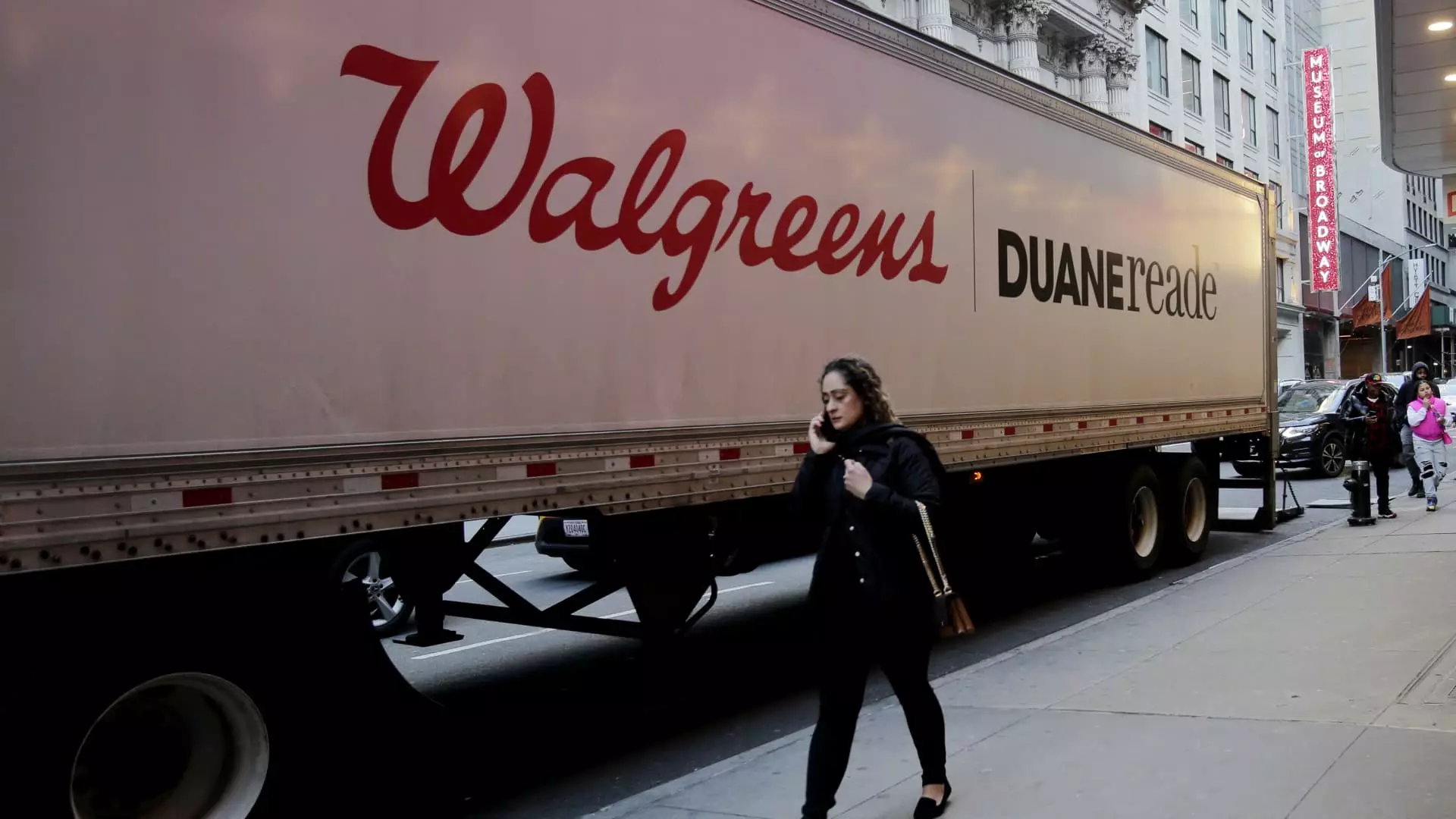As an industry stalwart, Walgreens has recently unveiled its fiscal first-quarter results, illuminating a landscape shaped by both struggle and strategic adaptation. The company reports that it is navigating through a delicate transitional phase, marked by the closure of underperforming stores and a rigorous focus on cost efficiency. With a mix of good and bad news, the quarterly outcomes invite an analysis of Walgreens’ overarching strategy and the implications for its future.
In the three-month period ending November 30, Walgreens achieved adjusted earnings per share of 51 cents, surpassing analysts’ expectations of 37 cents. Notably, revenue soared to $39.46 billion, representing a 7.5% increase compared to the previous year and exceeding Wall Street’s forecast of $37.36 billion. Despite reporting these positive figures, Walgreens experienced a net loss of $265 million or 31 cents per share, a stark contrast to the year-earlier quarter’s loss of $67 million or 8 cents per share. This significant loss highlights the continuing operational headaches plaguing Walgreens as it grapples with intensified pharmacy reimbursement pressures and shifts in consumer purchasing behavior.
While the surge in revenue is promising, the net loss is a sobering reminder of the volatile state of the pharmacy and retail landscape. This dual narrative might confuse investors looking for clarity as Walgreens simultaneously strives to maintain a vibrant revenue stream while also confronting deep-rooted financial challenges.
In a bid to solidify its financial footing, Walgreens plans to shutter about 1,200 stores over the next three years, with 500 closures anticipated in fiscal 2025 alone. These closures are indicative of a broader strategy aimed at optimizing the company’s retail footprint and focusing resources on more profitable locations. CEO Tim Wentworth emphasized this point, stating, “Our disciplined execution against our 2025 priorities reflects our intent to stabilize retail pharmacy.”
The elimination of underperforming storefronts and a commitment to reduce operational costs form the bedrock of Walgreens’ turnaround strategy. While this may lead to short-term disruptions and job losses, long-term sustainability may necessitate such bold actions. The crux of this strategy involves balancing immediate financial obligations with a clearer vision for the future as the company transitions towards a more pharmacy-centric operating model.
Looking into the specifics, Walgreens’ U.S. retail pharmacy division recorded sales of $30.87 billion, up 6.6% year-over-year, exceeding expectations of $29.21 billion. This growth is largely attributable to rising pharmacy sales, which surged by 10.4%. The notable increase in prescription fills and vaccinations indicates that even in a volatile marketplace, Walgreens remains a crucial player in healthcare delivery.
Conversely, retail sales experienced a decline of 6.2%, which Walgreens attributes to a lackluster cold and flu season and reduced demand in discretionary purchases. This is a critical area of concern for the company, especially in a competitive retail environment where consumer spending is increasingly dictated by economic pressures.
The company’s healthcare unit also shone during the quarter, reporting a 12% increase in sales to $2.17 billion. This division’s growth is commendable and points towards Walgreens’ ongoing expansion into primary care, as seen with VillageMD, and specialty pharmacy services like Shields Health Solutions. These sectors not only diversify Walgreens’ revenue streams but also align with shifting consumer preferences towards integrated healthcare solutions.
While Walgreens has provided a cautiously optimistic outlook, it has nevertheless maintained its adjusted earnings guidance for fiscal 2025 at between $1.40 and $1.80 per share, without offering annual sales forecasts. This restraint may signify an awareness of external uncertainties, including ongoing consumer behavior shifts, inflationary pressures, and the pervasive impact of emerging health trends.
The recent reports of potential acquisition discussions with private equity firm Sycamore Partners add another layer of complexity. If these talks advance, they could fundamentally alter Walgreens’ strategic trajectory and financial future, offering either a lifeline or further challenge.
While Walgreens has made strides in its fiscal first-quarter results, it faces substantial challenges that threaten its long-term viability. The firm’s commitment to optimizing its operations through store closures and diversified service offerings, alongside its recent financial performance, will play a vital role in determining its ability to navigate the intricacies of the retail pharmacy landscape effectively.

